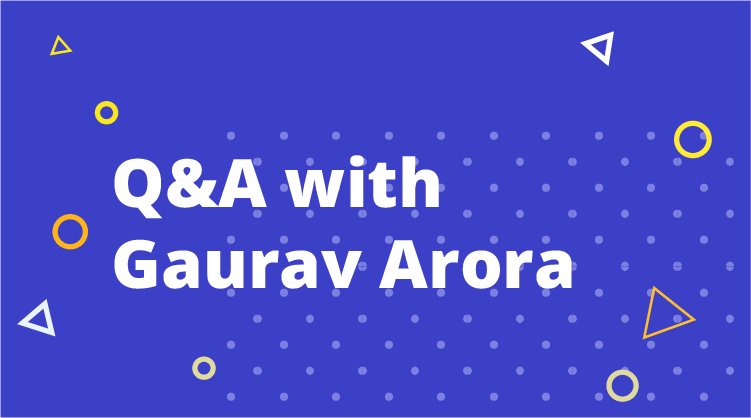Gaurav Kumar Arora has worked in software for more than 15 years, employing Microsoft technologies in a variety of fields, including construction, finance, aeronautics, and healthcare. As a Microsoft MVP and certified Technology Specialist and Scrum Master, Arora currently works as a solution architect responsible for tackling the technical challenges of continuous integration and deployment.
In the following interview, Syncfusion spoke with Kumar about his latest book in the Succinctly series: SOLID Principles Succinctly.
Why write a book for Syncfusion?
I’ve never been a big fan of books with thousands of pages. While spending my days going through books like ASP.NET Web API Succinctly and OWIN Succinctly from Syncfusion, it was evident that it was clearly my preferred style for technical content. It didn’t take me long to decide that the team at Syncfusion was my preferred team to go with when I wrote my next book.
I do not remember when I last read a book with thousand pages to the finish. I would always try to focus on the most important parts of it and investigate deeply during the implementation. In the busy life of today’s developer, there’s not enough time to read a book with 1,000 pages. That’s why I like the Syncfusion approach.
Is this your first technical manual?
This is my first book for Syncfusion technology. However, my first book, SOLID Principles Succinctly, is currently in review for publication. During the period while I was not working on a book, my interest in sharing knowledge made me write on numerous topics in the form of manuals, help guidelines, architectural guidelines, self-learning, and white papers. Writing a book provided a more complete experience, as I was able to put across a bigger picture, and that is when the idea of Syncfusion Succinctly hit me. While I am still immune to writer’s block, I am working hard on a new book called ASP.NET WebHooks Succinctly.
What is your favorite outdated technology?
Being from the generation that was lucky enough to see the transition from the floppy disk to SSD and 286 generation chipset to latest multi core machines, this will be tough. But I would still rate 3.5 floppy disks as my favorite. Many fond memories of attempting to transfer more than 100 MB through this wonderful innovation are still with me.
Progress is exciting but change is often met with fear. Especially with technology, change happens at a dizzying rate.
What have you learned since writing this e-book about SOLID principles?
Most of the programmers I know are more than willing to write quality code. While they do know the concepts, they don’t have a very clear idea about how to achieve their target. While I don’t have the honor of being the inventor of SOLID principles, I want to do my bit by bringing this closer to all those for whom night and days are driven more by technology and less by the sun. So in order to spread the practice of coding with efficiency—both for the program and the programmer—I did a lot of research. During this exercise I practiced the same principles and incorporated all the practices and learnings in this book.
During this initiative, I learned how to present your code from James McCaffrey. I learned a few new concepts while referring to the white papers of Robert C. Martin. Shivprasad Koirala’s white papers and resources were also a source of inspiration on presenting concise concepts.
The entire process has helped me grow not only as a writer but has also taught me new ways to express myself in a new format.
Do you have another reference that you would recommend to people interested in C# and ASP.Net?
For C# and ASP.Net programmers, I highly recommend Syncfusion’s ASP.NET Web API Succinctly and OWIN Succinctly.
To nurture skills in these areas, I recommend the Questpond video series (http://www.questpondvd.com/ ) and also IndiaMentor (http://www.Indiamentor.com ) to get mentorship.
Last but not least: be an attendee of the IndiaMentor Web Meet (http://IndiaMentor.com ) where I am one of the ment
